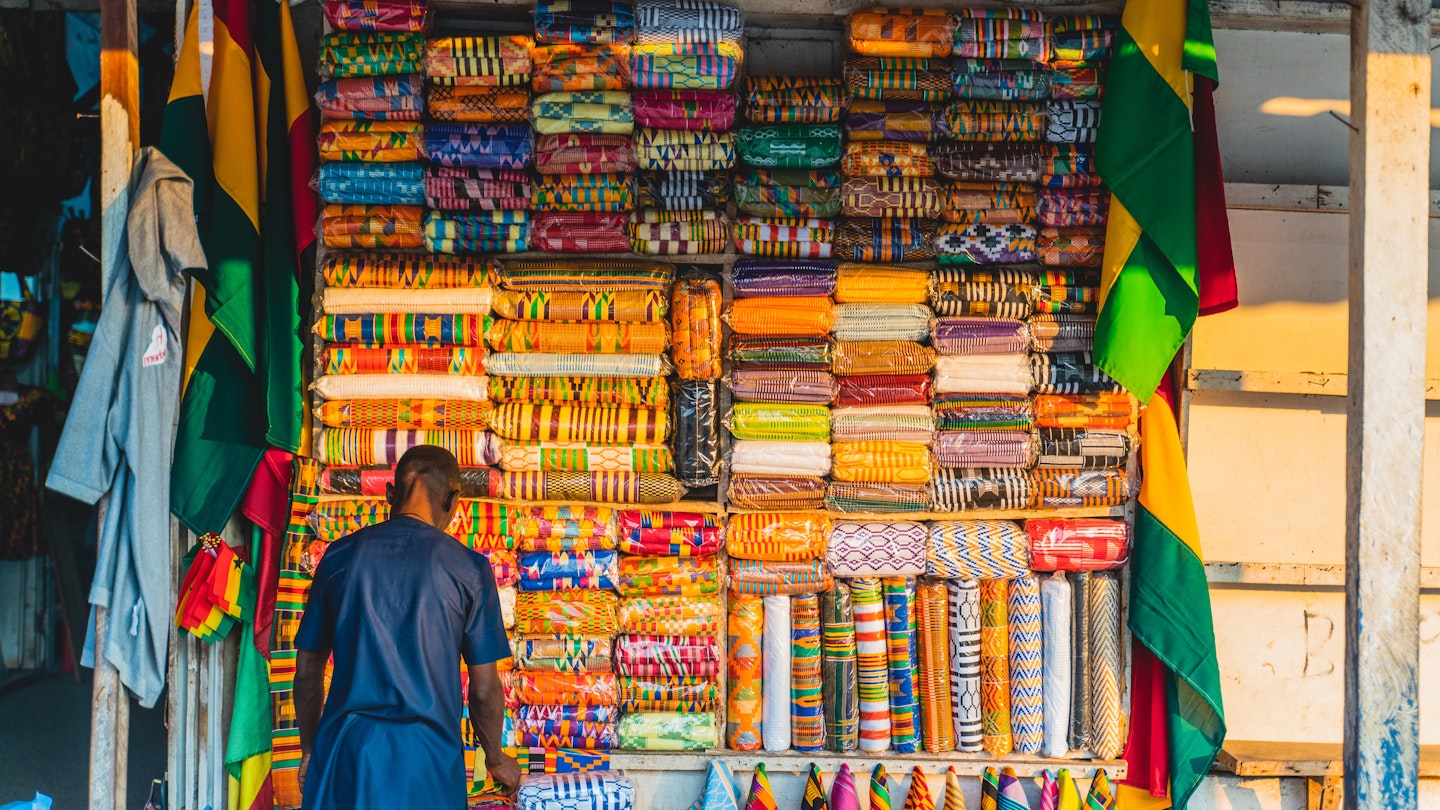Best Times to Visit Ghana
Being just a few degrees north of the equator, Ghana has an average temperature that remains balmy all year.
Its mild tropical climate boasts two distinct seasons: wet and dry. Both of them offer their own perks and setbacks. The wet season is an excellent time to visit the country’s north because the heat can be stifling the rest of the year. However, it’s the dusty dry season that offers the region’s best wildlife viewing. Generally, Ghana’s mildest temperatures occur at higher elevations, such as in the Ashanti Uplands, with humidity clinging to the coastline in places like Accra and the Cape Coast. The farther north you go, the hotter and drier it gets.
Whenever you decide to visit Ghana, you’ll always find plenty of fantastic experiences, including a calendar of colorful festivals that’s one of the country’s distinct calling cards. Season by season, month by month, here is our guide to the best times to visit Ghana.
December to March: The Best Time for Wildlife and Festivals
Ghana’s high season is also its dry season, which runs from November to March. With little to no rainfall, it’s fairly easy to travel across the country via Ghana’s network of well-maintained roadways.
These months are particularly good for visiting the country’s south, including the capital city of Accra. Many residents claim December is the best month to visit, as the holidays are in full swing with festivals such as Afrochella—a celebration of African music, fashion, art, and culture—adding to the festive atmosphere. One recurring event to look for year-round is the Ashanti Akwasidae festival held in Kumasi, which features drumming, dancing, and a procession of the Ashanti king and his entourage.
Although the air can be quite dusty and dry during this season—thanks to Saharan winds—the lower humidity results in fewer mosquitoes, making it more comfortable. Ghana’s dry season remains the best time of the year for wildlife sightings, especially from December to March, the country’s driest months.
September to November: Harvest Festivals and Smaller Crowds
September and October are part of the rainy season but are ideal for those wanting to avoid crowds. This period sees few travelers from Europe and North America, and the country’s harvest festivals begin. By November, the rains have ceased in the south, but the Sahara winds haven’t fully set in, making for good travel conditions.
April to August: The Rainy Season and Vacationers’ Peak
The low season in Ghana runs from April to August. This wet season can be humid and sticky, but also brings cooler temperatures and a lush explosion of greenery. Rains can range from brief showers to intense downpours. During this time, travel can be restricted due to flooded roadways, but there are still plenty of attractions in the outer regions.
April, May, and June are typically the wettest months. As the rains taper off in July and August, conditions improve for travel, particularly in southern areas while northern regions remain cooler. However, this is also when mosquitoes are most common, so precautions are necessary.
Spot Wildlife in January
In January, the Harmattan winds blow, bringing minimal rainfall. Wildlife sightings are plentiful during this time.
Keep the Binoculars Handy in February
The Harmattan winds remain active, drawing wildlife to watering holes in locations like Mole National Park.
Hot Weather in March
March is known as Ghana’s hottest month, although rains can begin at any time. Be prepared for sudden weather changes.
The Rains Arrive in April
April signifies the start of the wet season. Heavy rains can impact road conditions, particularly in the central parts of the country.
Cooler Days in May
May typically experiences heavy rains, especially in the central and southern regions, while temperatures can be more temperate.
Increased Activity in June
June is usually the wettest month and sees a rise in travelers from Europe and North America, making cities like Accra busier.
Cooler Northern Regions in July
July often brings a break in the rains for southern Ghana, making it a great time to explore both northern and southern regions.
August: Ghana’s Coldest Month
Although rains stay on standby, August is seen as Ghana’s chilliest and windiest month, with many tourists still in the country.
Celebrate the Harvest in September
By September, the cooler autumn air arrives, allowing for memorable harvest festivals despite the return of rains.
October: One of the Best Times to Visit
With cooler temperatures and fewer rains, October is an excellent month to visit. Harvest festivals abound.
November: Continued Fair Weather
Generally good weather conditions continue into November, making it a great time to explore Ghana.
Join the Returning Diaspora in December
As many from the Ghanaian diaspora return home for the holidays, December is filled with celebrations and local festivities.





